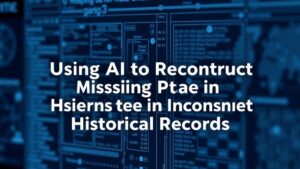Surveying Coastal Areas for Evidence of Forgotten Shipwrecks
Surveying Coastal Areas for Evidence of Forgotten Shipwrecks
The study of historical shipwrecks not only contributes to our understanding of maritime history but also provides insights into trade routes, naval warfare, and cultural exchanges of the past. This article aims to explore methodologies employed in surveying coastal areas for forgotten shipwrecks, significant examples of such wrecks, and the implications of these findings on archaeological and conservation practices.
The Importance of Shipwreck Archeology
Archaeological excavations of shipwrecks offer a profound resource for the interpretation of historical maritime activities. Forgotten shipwrecks can tell stories of voyages, economic conditions, and technological advancements. According to the National Oceanic and Atmospheric Administration (NOAA), there are an estimated 3 million shipwrecks worldwide, many of which remain undiscovered and unexamined. Shipwrecks are crucial not only for historical research but also for understanding the coastal ecosystems that may form around these submerged structures.
Methodologies in Coastal Surveying
Various methodologies exist for surveying coastal areas to locate shipwrecks. The primary techniques include:
- Remote Sensing: This technique employs technologies like side-scan sonar, multi-beam sonar, and satellite imagery to detect anomalies in underwater topographies.
- Sub-bottom Profiling: Used to map sediment layers beneath the seabed, this technique can reveal historical shipwreck sites embedded in sedimentary deposits.
- Magnetometry: By measuring the magnetic fields in a survey area, researchers can pinpoint metallic artifacts, which may indicate the presence of a shipwreck.
- Diver Surveys: Divers can be deployed to visually inspect suspected wreck sites and gather artifacts for further analysis.
For example, a survey conducted off the coast of Florida in 2018 utilized a combination of sonar and diver investigations, resulting in the discovery of a 19th-century shipwreck, the Harriet, previously thought to have been lost to time.
Case Studies: Notable Shipwreck Discoveries
Several notable shipwreck discoveries illustrate the value of coastal area surveys:
- The USS Arizona: Sunk during the attack on Pearl Harbor in 1941, this shipwreck serves as a memorial and research site, demonstrating the impact of military conflicts on maritime history.
- The Titanic: Discovered in 1985, this wreck not only sparked a resurgence of interest in deep-sea exploration technology but also raised questions regarding the preservation of underwater cultural heritage.
Through advanced techniques and collaborative research, the exploration of these wrecks has not only enhanced our historical knowledge but also contributed significantly to maritime conservation strategies.
Challenges in Shipwreck Surveying
Despite the advancements in technology and methodologies, challenges remain in the effective surveying of coastal areas. e include:
- Environmental Conditions: Factors such as water clarity, currents, and weather patterns can impede the effectiveness of surveying tools.
- Legal and Ethical Considerations: International laws regarding shipwrecks, particularly those related to human remains and national heritage, necessitate careful navigation within ethical frameworks.
- Funding and Resources: Many exploratory and archaeological projects depend on grants and donations, which can limit the scope of research activities.
The Future of Coastal Surveying
As technology evolves, so too do the capabilities of marine archaeologists in locating and studying shipwrecks. Developments in artificial intelligence and machine learning, for instance, promise to enhance the analysis of sonar data to improve mapping and detection strategies. Also, partnerships between governmental agencies, academic institutions, and private organizations are vital for driving forward research initiatives.
For example, the UNESCO Convention on the Protection of the Underwater Cultural Heritage is gaining traction globally, emphasizing the importance of preserving shipwreck sites as irreplaceable components of our collective history.
Conclusion
The continued surveying of coastal areas for forgotten shipwrecks is a crucial endeavor in both historical research and environmental conservation. By employing advanced techniques and fostering partnerships across sectors, scholars and maritime archaeologists can uncover the secrets hidden beneath the waves, further enriching our understanding of human interaction with maritime environments.
Actionable Takeaways
- Invest in technology that enhances surveying capacity, such as advanced sonar systems.
- Encourage interdisciplinary collaborations among archaeologists, environmental scientists, and technology experts.
- Promote public awareness and involvement in protecting underwater cultural heritage through educational programs.


